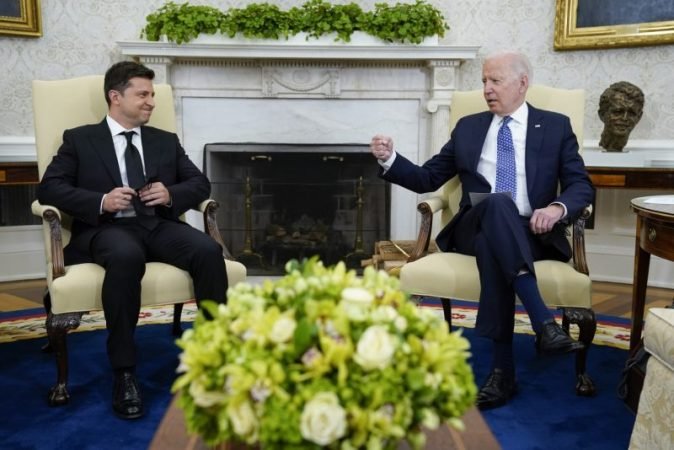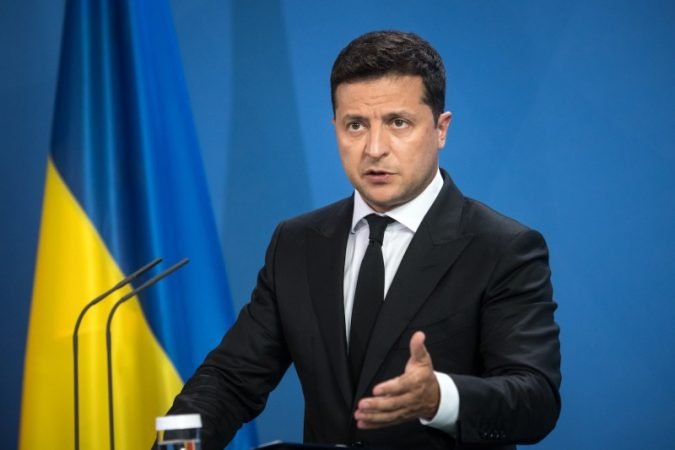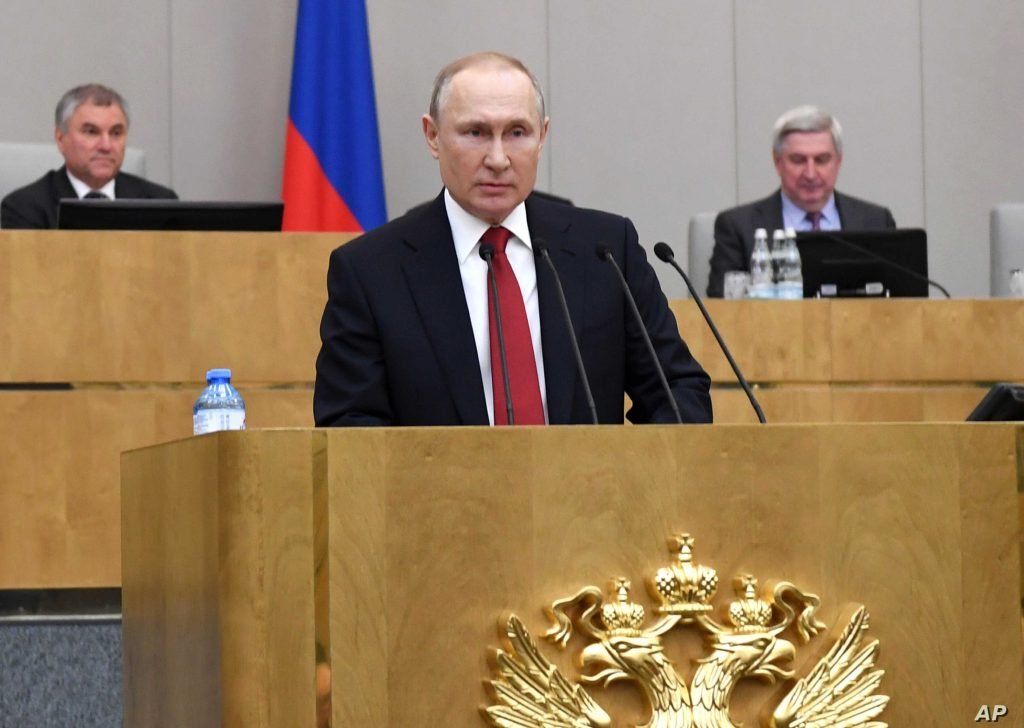Obstacles to the US and Ukraine’s Strategic Partnership

Russia’s annexation of Crimea in 2014 turned Ukraine into a thorny issue that has partly shaped US-Russia relations for over half a decade now. The insecurity of dealing with a hostile incoming leader – and the fall of a pro-Kremlin President Viktor Yanukovych – across its Western border probably compelled Putin to latch onto the chaos resulting from the 2014 Maidan protests. It is widely believed by experts to be a knee-jerk reaction to the possibilities of NATO’s enlargement to include Ukraine and Georgia and the cancellation of the Russian lease on the naval base in Sevastopol. While the former has always been unacceptable to Kremlin, the latter would amount to endangering Russia’s strategic capabilities in the Black Sea.
Background and the Contemporary Factors
While Kyiv has featured among one of the priorities in US foreign policy, any significant progress is yet to be made. The initial optimism around a possible strategic partnership that spawned under Bush in 2008, soon plateaued in the subsequent years, until 2014 when Russia flooded the peninsula with over 20,000. In April this year, following Biden’s provocative remarks vis-à-vis Russia, Putin flexed his military capabilities by amassing over eighty thousand troops along its borders with Ukraine. Albeit a tactical maneuver, the move carried an underlying message concerning the limitations US and its allies in Europe should observe in dealing with Russia’s immediate neighbors. Soon enough, deliberations by US and European Union mellowed the situation and the White House announced a summit between Biden and Putin. Although the summit concluded without any drastic commitments and fanfare, it paved the way–along with pressure from the German Chancellor–for waivers over the Nord Stream 2 gas pipeline. In Kyiv, these waivers, and reservations in NATO’s possible inclusion of Ukraine – along with a sense of US’ neglect towards its security commitments – is causing deep insecurity.
The first official meeting between Biden and his counterpart Volodymyr Zelensky in September this year was an exhibition of simmering diplomatic conflicts among the two allies. While issues concerning security, armaments and energy remained atop, the US President took the opportunity to rebut Zelensky’s remarks on the issue of NATO Membership Action Plan. Putting the onus on Ukraine, Biden underlined the issues of rampant corruption, oligarchy and state intervention in private corporations as central in impeding Ukraine’s membership of the military alliance. Although Moscow features as a common security threat in both the capitals, the Biden-Zelensky summit was a reflection of the strategic chord struck by Putin’s tactical gamble in aggressing against Ukraine. The joint statement despite mentioning Russia several times and calling its “cross-border intervention” as illegitimate, makes no demands or promises – apart from raising issues of rules-based order, multilateral engagements and international norms – in dealing with the eight-year-long cold-peace. US did however provide a sizeable transfer of technology in the domain of cyberspace, intelligence sharing and Black Sea security. Zelensky had previously quoted a demand of over USD 22 billion to deal with a twin Russian aggression – along its territory through proxies as well as the Black Sea. The summit, however, concluded with an announcement of an additional USD 60 million support to ramp up the Javelin anti-armor systems and other defensive lethal and non-lethal capabilities. It is also worth noting that US since 2014, has committed over USD 2.5 billion in support towards Ukraine.

Factors inhibiting a Strategic Partnership
Although Biden, unlike his predecessor may prefer to take up a bolder stance against Russia, it is well aware of Putin’s geostrategic aspirations. In the past, Putin has knit-picked instances of Western vulnerability across the globe before carefully intruding to gain ground. Considering Russia’s long-held aversions to NATO’s expansion efforts up to its western borders, US and its allies across the Atlantic may not find it a preferable option to completely alienate Russia.
Additionally, the issue of Nord Stream II was a clear sign of often diverging interests in crucial domains like energy and security among the US and its European allies. What can mainly be attributed to the diplomatic efforts of the German Chancellor, was a clear sign that US’ allies in Europe may not always find it preferable to toe its line – even in matters of security alignments – when crucial interests were at stake. Although, the pipeline may rake up the costs of oil across Ukraine and may allow its coercion at the hands of Putin – by refusing to stretch the current contract on the transit of Russian gas after 2024 – the US withdrew its sanctions right after Russia’s military build-up earlier this year.
Moreover, as Biden begins to look out for new allies across the world, his increasing usage of the democratic-authoritarian distinction comes with a few hidden costs. Despite tremendous efforts by the West towards cultivating institutions and free corporations in the country, there has been a sizeable democratic black-sliding – even under the seemingly liberal Zelensky – across Ukraine. Apart from reports of corruption across Ukraine’s largest industries and the state’s intervention in purging corporate behemoths, the country also lags in attracting foreign investments, mitigating separatism, spurring domestic consumptions and ensuring the freedom of its institutions.
The US from its previous experiences of intervention remains wary of the fundamental problems in guaranteeing support to a state that it doesn’t consider a comprehensive partner. The formidability of institutions that can outlast large conflicts and crises seem to be a possible pre-requisite for the US in extending broader security commitments. Along with that, Putin strategic approach doesn’t discount the current tendencies in US foreign policy of cutting down on its direct military involvements elsewhere in the world. This seems to be the pillar and the driving force of both: US’ reluctance to broaden NATO’s membership panel (in direct conflict with Russia) as well as Putin’s showcase of aggression in 2014 and earlier this year (to signal a possible confrontation, in case of military involvement).

Political and Business Climate
The conflict in Ukraine has for long been restricted to its Southern regions where nationalist militias remain pitted against the Pro-Russian forces amidst a civilian population of over a hundred thousand living in constant fear. This has led to minor outbreaks of nationalistic processions and anti-Russian riots elsewhere in the country, the battle hasn’t spilt over to the other regions of the country.
The political climate since 2014 however, has badly impacted the international business in more ways than one. With more than five years of political uncertainty and instability following the Maidan revolutions, most of the foreign capital escaped Ukraine for more stable destinations. Moreover, Russia has waged an ‘influence’ war across Ukraine’s private businesses, media and state institutions wherein influential businessmen, politicians and civil-actors with backing from Moscow impede the state from maximising its territorial and/or institutional control. Such a dual-sided proxy-warfare often translates into unilateral actions by the state that strips it of its democratic identities, further aggravating any investment prospects.
The Way Forward
While the broader situation in Ukraine is unlikely to change drastically, the current administration has been prioritizing issues of foreign investments and institutional strength to pave a way for better support from the domestic public and the western world. The current geopolitical climate will also be a test for the strategic patience on which the US-Ukraine understanding of security partnership rests. As long as the US can help transform Ukraine’s economy and help it prosper, it may be able to foster more political and business certainty within its territory. This may eventually also allow Ukraine to present some kind of challenge to Putin by using economic and financial levers. But until then, Ukraine’s stability also banks on the rhetoric of its leaders, the tactical posturing by the US and the immediate interests of Vladimir Putin.



















